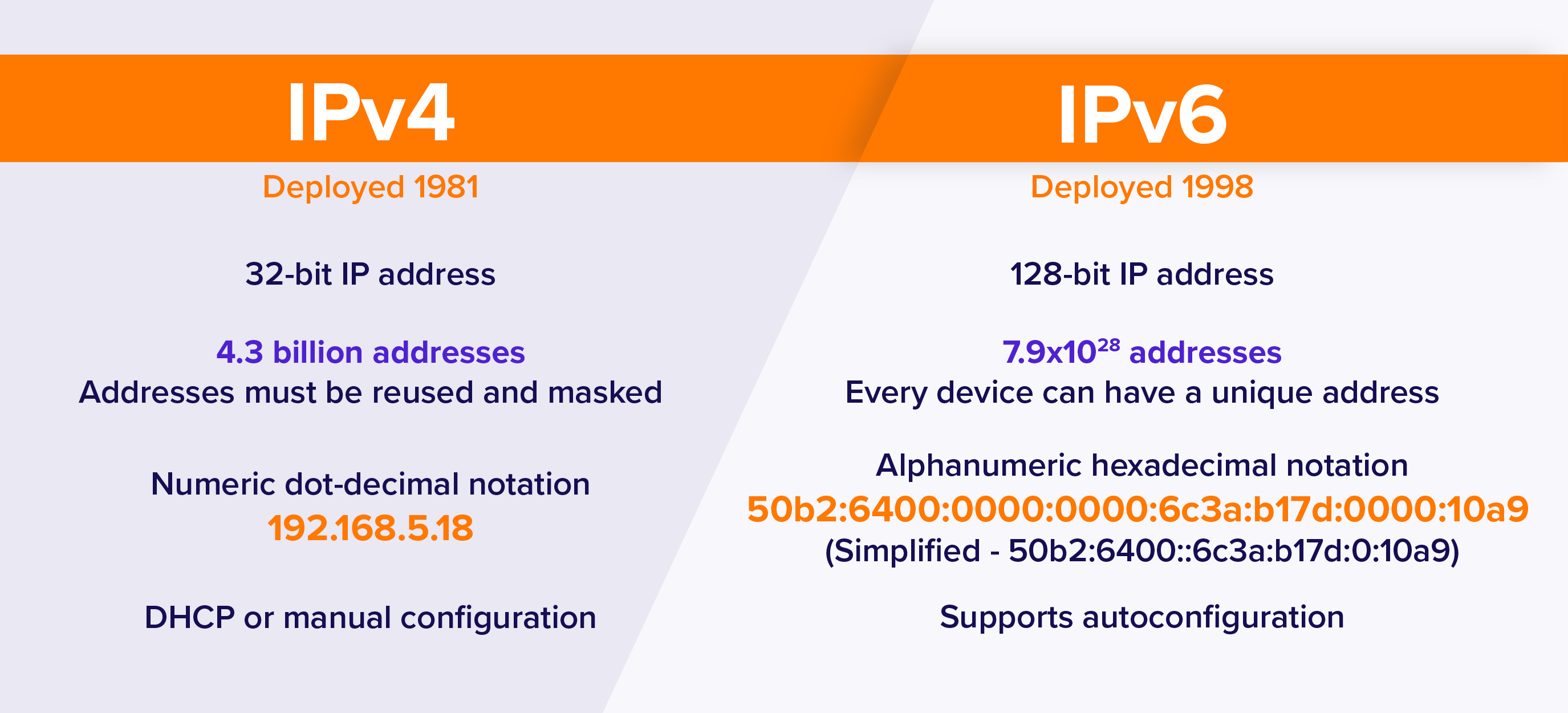
7 Advantages of IPv6 over IPv4 in 2025
In the ever-evolving landscape of the internet, change is constant, and technology must advance to meet our growing digital demands. One significant shift in networking is the transition from IPv4 (Internet Protocol version 4) to IPv6 (Internet Protocol version 6). IPv6, with its expanded address space and enhanced features, offers several key advantages that are shaping the future of online connectivity. While IPv6 brings compelling benefits, it also has its disadvantages compared to IPv4 that are worth considering. In this article, we’ll explore the unique advantages of IPv6 over its predecessor, IPv4, and how this transition influences the future of the internet.
Address Space Expansion
One of the most pressing reasons for the shift to IPv6 is the vast increase in address space it provides. IPv4’s limited address capacity has long been a concern as the number of devices connected to the internet continues to skyrocket. IPv6 addresses this issue by offering a 128-bit address space, allowing for an almost infinite number of unique addresses. This expansion is a game-changer for accommodating the growing number of smartphones, IoT devices, and other interconnected gadgets.
End-to-End Connectivity
IPv6 promotes direct communication between devices, improving efficiency and reducing the need for NAT (Network Address Translation) devices. NAT was widely used in IPv4 to deal with address exhaustion, but it introduced complexities that hindered seamless communication. IPv6 eliminates these hurdles, creating a more streamlined, peer-to-peer network environment.
Simplified Network Configuration
IPv6 incorporates plug-and-play functionality, making it easier to set up new devices on the network. With IPv4, network administrators often need to manually configure devices or rely on DHCP (Dynamic Host Configuration Protocol). IPv6 simplifies this process, reducing administrative overhead and making it more convenient for users to connect to networks.
Enhanced Security
Security concerns are paramount in the digital age, and IPv6 brings several improvements in this domain. The protocol includes IPsec (Internet Protocol Security) as a standard feature, providing robust encryption and authentication for data transmitted over the network. This built-in security boosts protection against various cyber threats, creating a safer online experience for users.
Efficient Routing and Packet Processing
IPv6’s simplified header structure results in more efficient routing and packet processing. The streamlined header reduces the time and resources required for routers to process packets, leading to faster data transmission and reduced latency. This efficiency is crucial for modern applications that demand real-time communication.
Support for Quality of Service (QoS)
IPv6 offers native support for QoS, allowing network administrators to prioritize traffic based on specific requirements. This is essential for services that require consistent bandwidth, such as VoIP (Voice over Internet Protocol) and video streaming. IPv6’s QoS capabilities enable better resource allocation, ensuring a smoother user experience.
Future-Proofing the Internet
The transition to IPv6 is a forward-looking strategy that ensures the continued growth and sustainability of the internet. As more devices come online, including those in emerging technologies like 5G and AI-driven applications, IPv6’s vast address space and modern design will play a critical role in supporting this expansion. By embracing IPv6, we’re laying the foundation for the future of the digital world.
Conclusion
In conclusion, IPv6’s advantages over IPv4 are numerous and profound. Its larger address space, improved security, simplified configuration, and support for emerging technologies make it an essential upgrade for the internet’s continued evolution. Embracing IPv6 is not just about staying up to date; it’s about preparing for the limitless possibilities of the digital age. The transition to IPv6 is a critical step, unlocking the doors to a faster, safer, and more interconnected future.